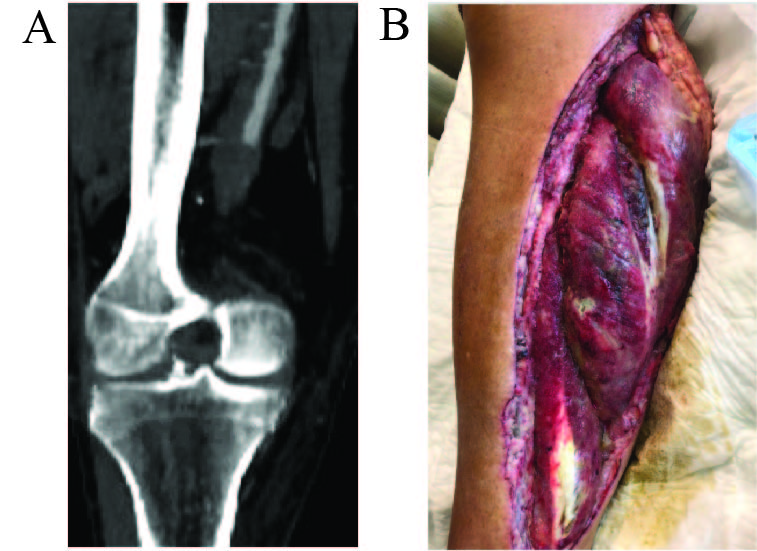Functional Limb Salvage after Acute Ischemia Despite Near-Total Deep and Superficial Posterior Compartment Muscle Necrosis
Arati A Gangadharan, Gloria L. Kim, Hoyune Cho, Paul S. Cederna, Matthew A Corriere
University of Michigan Health System, Ann Arbor, MI
INTRODUCTION: Soft tissue viability, combined with ,motor and sensory function, are important considerations when determining whether limb salvage is possible in the setting of acute limb ischemia (ALI). Muscle viability is typically evaluated based on appearance and contractility with electrocautery stimulation, and lack of viable muscle is sometimes used as a criterion for early amputation. We describe a case of functional limb salvage despite an insensate foot, lack of ankle flexion and extension, and extensive necrosis of the superficial and deep posterior compartments musculature in a patient with iatrogenic ALI who declined early amputation. METHODS: (Case Report) A 71-year-old man without previous history of peripheral artery disease or associated risk factors had ALI identified approximately 10 hours following an orthopedic procedure. He lacked foot sensation or ability to move his ankle joint at the time of Vascular Consultation, and imaging findings were consistent with popliteal artery thrombosis (Figure A). He was taken to the operating room and underwent emergency superficial femoral to below-knee popliteal artery bypass and four compartment fasciotomies. Fasciotomy revealed non-viable posterior compartment muscle that did not contract with electrocautery stimulation (Figure B). The patient subsequently underwent serial debridements of the gastrocnemius, soleus, and associated tendons. The patient was offered amputation due to lack of viable deep compartment muscle but refused, and the residual deep muscle was left intact and managed with a wound vac. After a 30-day inpatient hospital stay, the patient was discharged to inpatient rehabilitation where he spent an additional 13 days prior to discharge with outpatient wound care. Eventual skin grafting was anticipated, but unnecessary.
RESULTS: The patient ultimately healed his wound, recovered partial ankle flexion/extension (video), and now walks with a cane. His bypass remains patent at one year.
CONCLUSIONS: Conventional criteria used to assess muscle viability may under-estimate potential for limb salvage. Conversely, early amputation based on lack of viable muscle may result in loss of potentially salvageable legs that may recovery additional function. Amputation following ALI should be used selectively, and conventional criteria for a non-salvageable leg may be overly inclusive. 
Back to 2020 Posters
